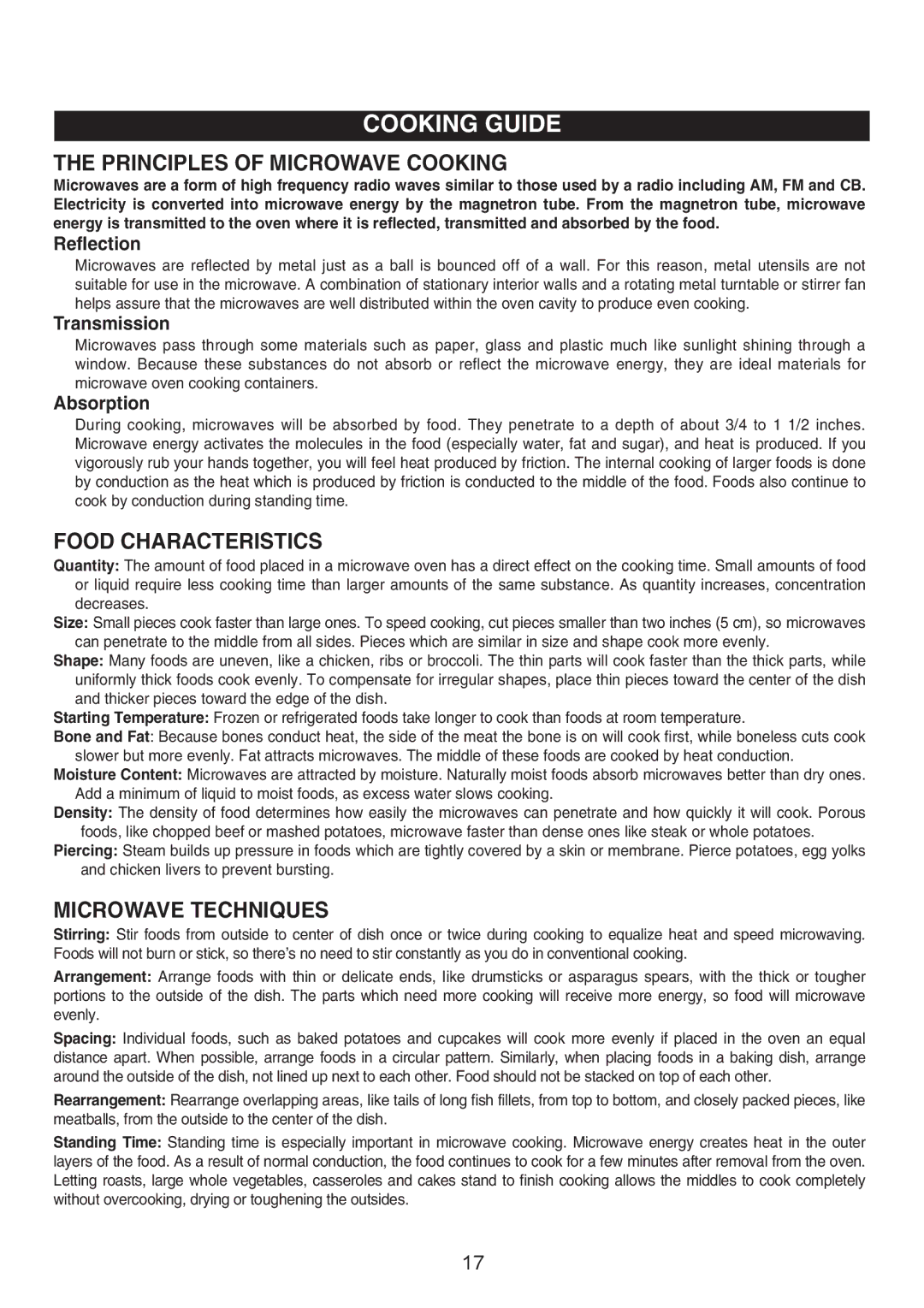MW8992SB, MW8992GN specifications
The Emerson MW8992GN and MW8992SB are microwave ovens that exemplify efficiency and modern design. Perfectly suited for today’s busy lifestyle, these appliances blend remarkable features with innovative technology to provide a reliable cooking experience.At the heart of the MW8992GN and MW8992SB is a powerful microwave generator that ensures even cooking and reheating. With a robust wattage, these microwaves can rapidly heat food while maintaining the flavors and nutrients. The two models offer adjustable power levels, allowing users to select from various settings to achieve the perfect cooking results for different types of dishes.
One notable feature of the Emerson MW8992 series is its user-friendly control panel. Designed with simplicity in mind, the panel enables even the most novice cooks to operate the microwave with ease. The digital display is clear and easy to read, providing convenient feedback during usage.
Both models boast an extensive range of pre-set cooking options, which can significantly reduce meal preparation time. Users can select settings for popular foods such as popcorn, pizza, and vegetables, making meal prep faster and less daunting. Additionally, the “Express Cook” and “Auto Defrost” functions further enhance the user experience, providing quick solutions to common cooking tasks.
In terms of design, the MW8992GN showcases a sleek green finish, while the MW8992SB sports a stylish silver-black combination. These attractive designs not only enhance kitchen aesthetics but also promote functionality with easy-to-clean surfaces.
Safety is also a primary consideration in the design of Emerson microwaves. With features like child lock and automatic shut-off, the MW8992 models ensure that the appliance is safe to use in homes with young children.
Moreover, both models are lightweight and compact, making them suitable for small kitchens, dorm rooms, or office spaces. Despite their size, they have ample interior space, allowing for large dishes and meals.
In summary, the Emerson MW8992GN and MW8992SB are outstanding microwave ovens that combine power, versatility, and modern design. With user-friendly features, various cooking options, and safety technologies, these models are ideal for anyone looking to simplify their cooking and heating tasks while enjoying the modern conveniences of a microwave oven.
